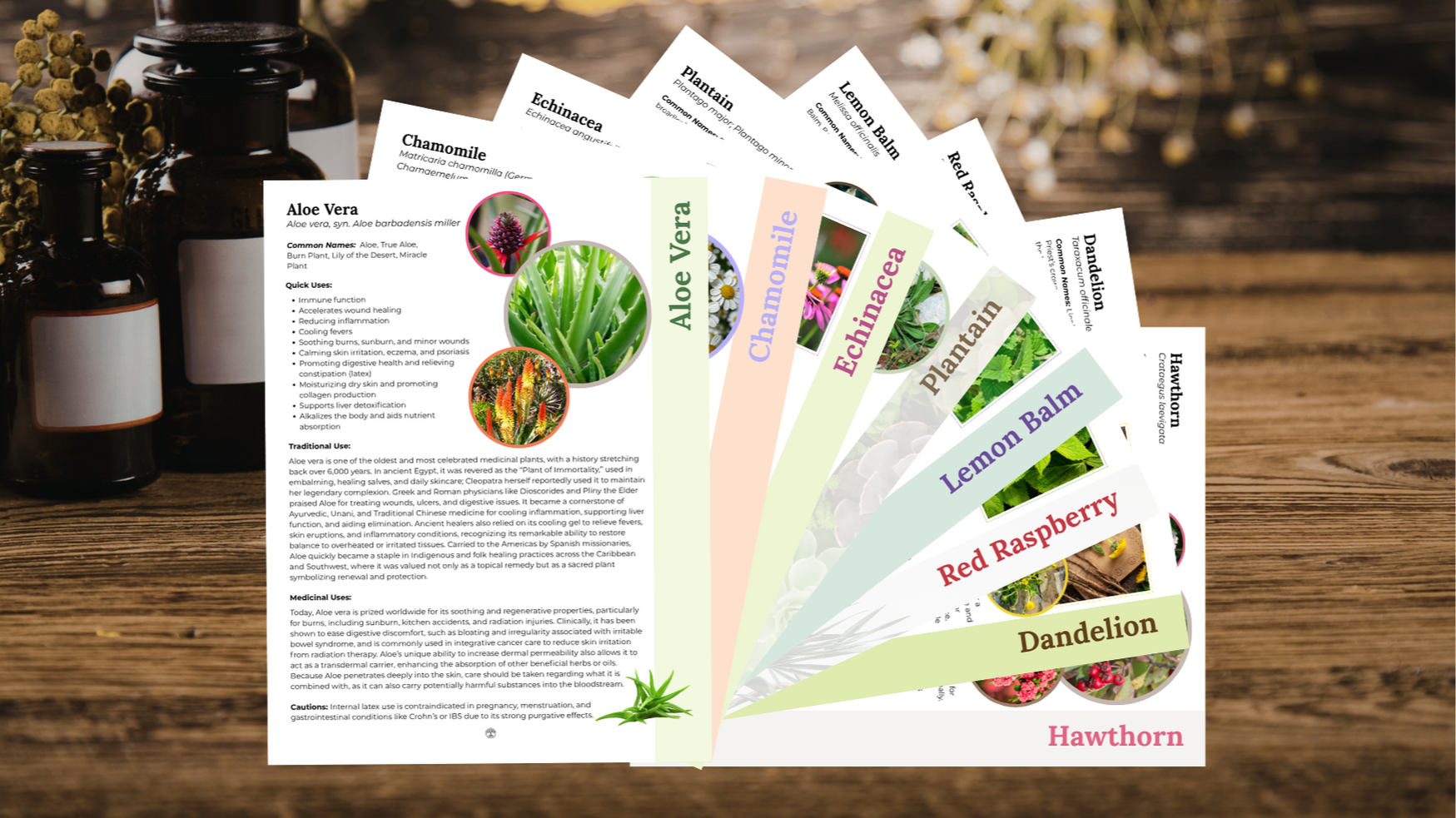Accidents Happen!
May 31, 2023Band Aid or Better?
Accidents happen. When they happened before I knew about first-aid herbs I just slapped on a band aide and hoped for the best. More serious injuries required a doctors visit. Now I slap more than a band aide on! I keep a supply of fabulous first-aide herbs on hand for just such a surprise.
To Bruise or Not to Bruise
Several times a week I go to an exercise class that starts at 5 am. My friends and I each take turns driving in the early morning. I live in the country and my walkway from the house to the car is long and paved with uneven stones. At the end of the walkway there are a few large uneven steps made out of these uneven stones. One morning, I was running late and failed to turn on the outside light. I ran down the walkway and across the steps, accidentally missed one step, and landed on my knee. I knew immediately that I had a problem and I would not be exercising that day. Instead of reaching for the band-aides I reached for my special first-aide herbs.
Another time I hurt myself in the yard, I was wearing tall rubber work boots. This time we were trying to separate the bull from the herd when I fell on my knee. Again, I knew a large bruise would be the result so, I acted quickly, using my herbal knowledge. I first grabbed Arnica to address the bruising and muscle aches.
I kept my leg elevated and used this Arnica poultice for the first few hours, then I replaced it with a second poultice of some other healing herbs. I changed this poultice every 4 to 6 hours the first night and then again the second night. I never bruised, although my knee did ache for a couple more days. I was thrilled there was very little visual evidence of the injury, and was able to go back to my normal routine within a couple of days.
Herbal First Aid
The first poultice of arnica I used addressed the bruising, muscle pain, and body aches. The second poultice I applied stimulated healing.
The wound healing herbal combination I used included comfrey leaf and root, marshmallow root, plantain leaf, and a pinch of cayenne.
Comfrey is a cell proliferate, which means it supports cell division. Cell division is needed when tissue is healing or rebuilding.
- Marshmallow root stimulates healing and is a demulcent. Demulcent herbs soothe and calm anything it comes in contact with.
- Plantain leaf has a drawing actions. In this case I needed to draw out the debris imbedded in my skin. Plantain also supports and encourages healing.
- Cayenne adds a bit of heat and brings blood to the injured area. It is also a great catalyst, helping other herbs increase their effectiveness.
What is a poultice? A poultice is made with either dry or fresh herbs. The herbs are moistened with a small about of liquid, usually water, to make a mash. This mash is placed directly on the injured area. It is held in place with plastic wrap, then covered with a dishtowel to hold in the heat. The poultice is left in place for about 20-30 minutes or sometimes hours depending on the situation.
Kelly Summers, is a Master Herbalist & Natural Healing Guide®. She knows that knowledge is empowering and deeply desires to share the insights she has learned through her continued journey of learning.
References
Christopher, John R. School of Natural Healing, 16th edition. (Christopher Publications, UT: 2020).
Coffman, Sam. Herbal Medics: A Green Beret's Guide to Emergency Medical Preparedness and Natural First Aid. (Storey Publishing, MA: 2021).
Tilgner, Sharol Marie. Herbal Medicine: From the Heart of the Earth. (Wise Acres, OR: 2009).



